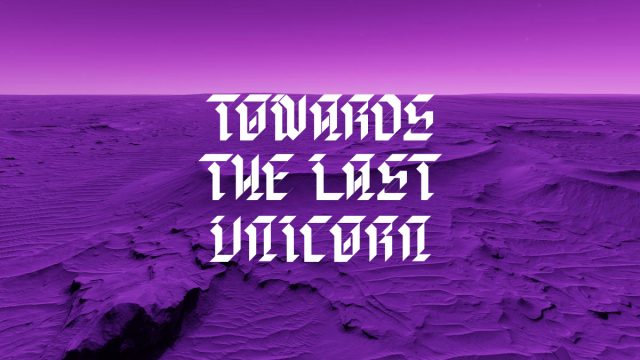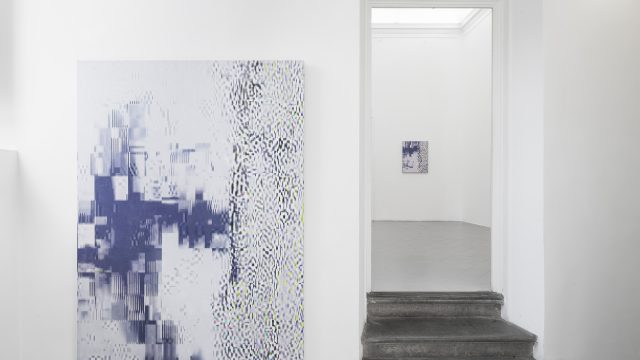Monika Sprüth and Philomene Magers are delighted to present the gallery’s first exhibition featuring the work of the celebrated Los Angeles–based artist and musician Llyn Foulkes. Revered as much for his iconic imagery as for his irascible iconoclasm, for nearly six decades Foulkes has produced paintings, assemblages, and collages that have explored the darker corners of the American psyche, while also conveying a sense of hopefulness and possibility through his manipulations of everyday materials into richly layered works of art.
Never content with any one medium, technique, or approach, Foulkes has continually bucked art world trends to produce a resolutely singular body of work over the course of his multifaceted career. His somber assemblages of the late 1950s and early 1960s—inspired, in part, by his travels through Germany in the aftermath of World War II—received early attention from influential postwar venues such as the Ferus Gallery, the Pasadena Art Museum, and the San Francisco Museum of Modern Art, and his Pop-oriented paintings of the 1960s earned him exhibitions, sales, and accolades, including the first-place prize in painting at the 1967 Paris Biennial. In the early 1970s he soon shifted his work towards probing, collage-infused paintings featuring altered photographic portraits, desolate landscapes, and “bloody heads” that would become the mainstay of his practice, but at the time ran entirely counter to the art world’s focus on minimalism and conceptualism. Though it would take many years for this new work to receive sustained critical attention and acclaim, Foulkes continued to produce it unabated, expanding the scale of his painting-constructions to wall-sized proportions, always intent on using his work to expose the triumphs and failures of his contemporary socio-political moment.
Foulkes’ exhibition at Sprüth Magers, Los Angeles, highlights recent paintings created since his major traveling retrospective organized by UCLA’s Hammer Museum in 2013-14. These works utilize the artist’s usual compendium of scavenged objects, painted passages, and wooden inclusions. They likewise extend many of the subjects and themes that have appeared across Foulkes’ oeuvre, including craggy mountain landscapes, statements of self-doubt and self-searching, and biting indictments of political corruption and corporate greed—often through the recurring figureheads of Disney and Mickey Mouse. In one new painting, a figure modeled in bas-relief represents Foulkes as he lies in a dinghy wearing yellow Mickey feet, set adrift into the world with no clear destination. This sense of unease has regularly permeated Foulkes’ work, but it may never have been so timely or poignant as in the present wake of the 2016 US presidential election. With images of flags and titles such as Político (2014-16) and To Bernie, From Llyn (2016), echoes of this event loom large. Far from offering an obvious message, however, Foulkes’ paintings urge us to think broadly and consider our values in an age of profound uncertainty.
Many works in the exhibition are intimately scaled, but several new large-scale paintings also take center stage. In Night Train (2016), an engrossing velvet background is pierced with hundreds of pearlescent stars—the view through a window on a strange nighttime voyage. In the foreground, a palpable sense of light emanates from a television, which softly illuminates a sinister-looking figure. As with all of Foulkes’ larger works, the piece has been painstakingly constructed from different layers of materials whose wildly varying textures add a sense of life—if uncanny and unfamiliar—to the scene. In works such as The Bridge (2014) and The Crazy Drive (2015), small objects, cars, and figures are set amidst desolate mountain views; Foulkes again skillfully creates a feeling of deep, receding space through gradations of color and carved wood, despite the painting’s surface being relatively shallow. The viewer is left to meander, imaginatively, throughout these works’ winding paths and potential narratives.
A notable addition to previous bodies of work is Foulkes’ evocative use of natural wood grain as a compositional device in many of his new paintings. In Eye of the Sun (2014), for instance, the sinuous rings and waves around a knot in the wood become a starburst, or rising sun. Elsewhere, as in The Saint (2014) and To L.H. (2014), Foulkes allows the splitting surfaces of older plywood, painted in blue, to suggest the rippling surface of water. These rough, wrinkled wooden surfaces thus become both markers and metaphors for the passage of time.
In addition to his work in the visual arts, Foulkes has had an equally long career as a musician. He played in bands in the 1960s and 1970s, including an appearance on The Tonight Show with Johnny Carson. Bit by bit, he began to build what became The Machine—a massive, one-man instrument that includes various kinds of horns, cowbells, organ pipes, and percussive elements. Foulkes writes, sings, and plays songs on The Machine that reflect his life in Los Angeles, the disappearing West, and the promises and pitfalls of both his artistic career and the American Dream more broadly. The artist will perform on The Machine at a closing reception for the exhibition.
Sprüth Magers (press release)
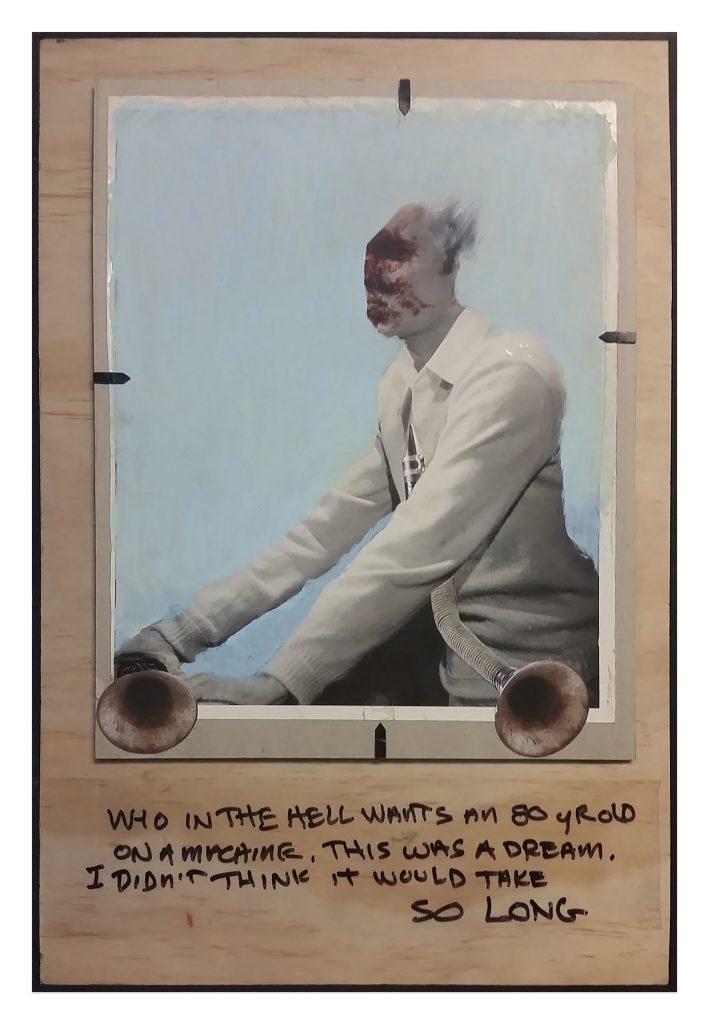
Photographs, Oil Paint, Marker and Found Objects on Plywood 26 x 39,4 cm, 10 1/4 x 15 1/2 inches
© LIyn Foulkes. Courtesy Sprüth Magers
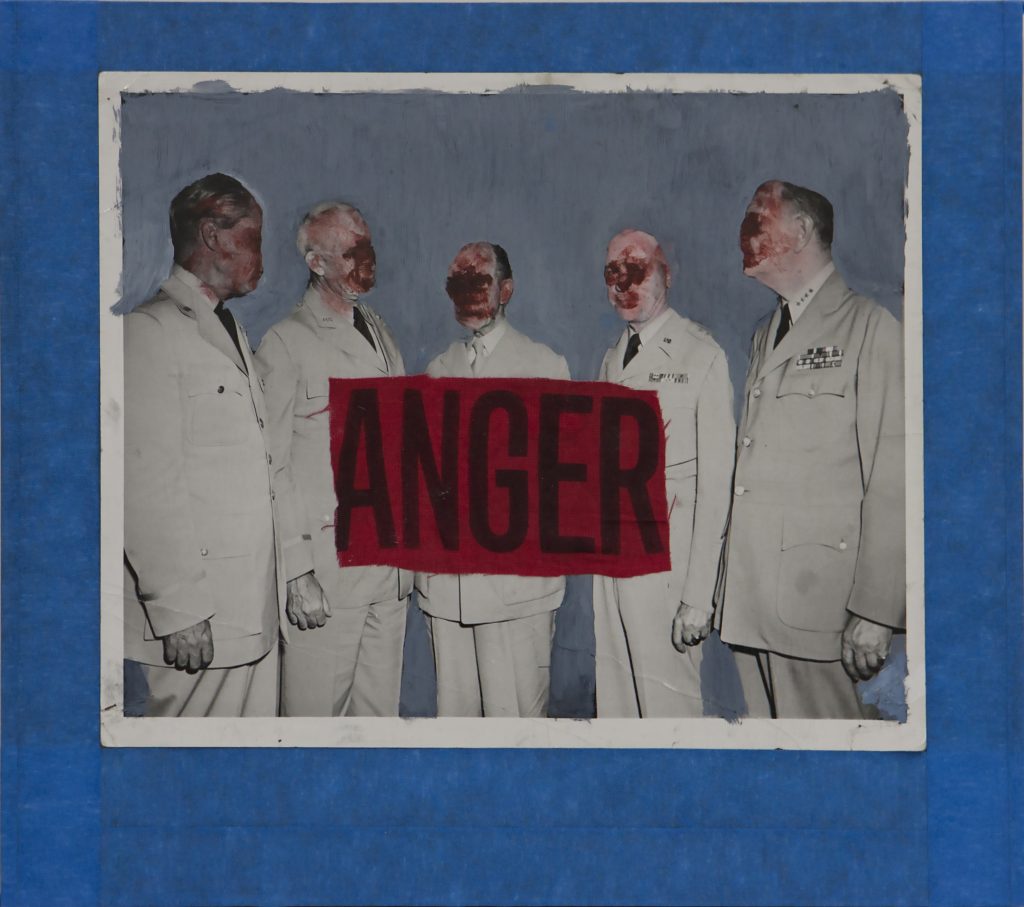
Photograph, Oil Paint, Fabric, Ink and Found Objects on Plywood, 31,8 x 27,9 cm, 12 1/2 x 11 inches
© LIyn Foulkes. Courtesy Sprüth Magers
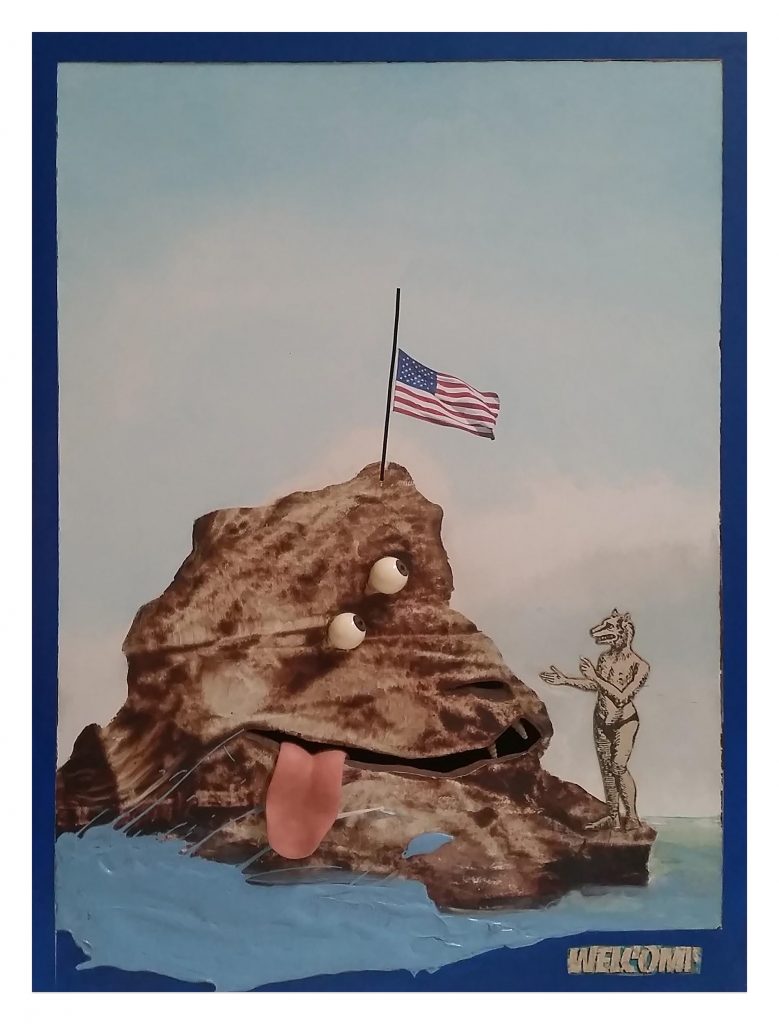
Oil paint and found objects on Masonite in found frame 50,8 x 69,9 cm, 20 x 27 1/2 inches
© LIyn Foulkes. Courtesy Sprüth Magers

